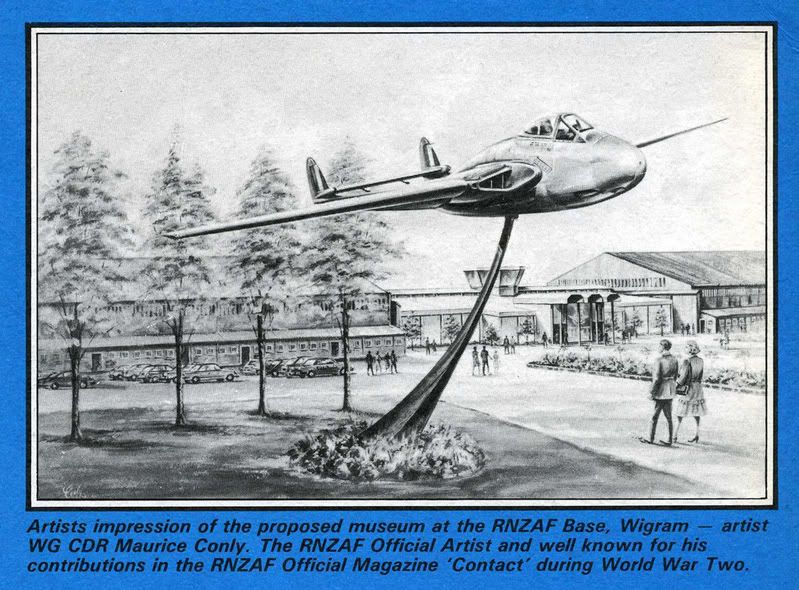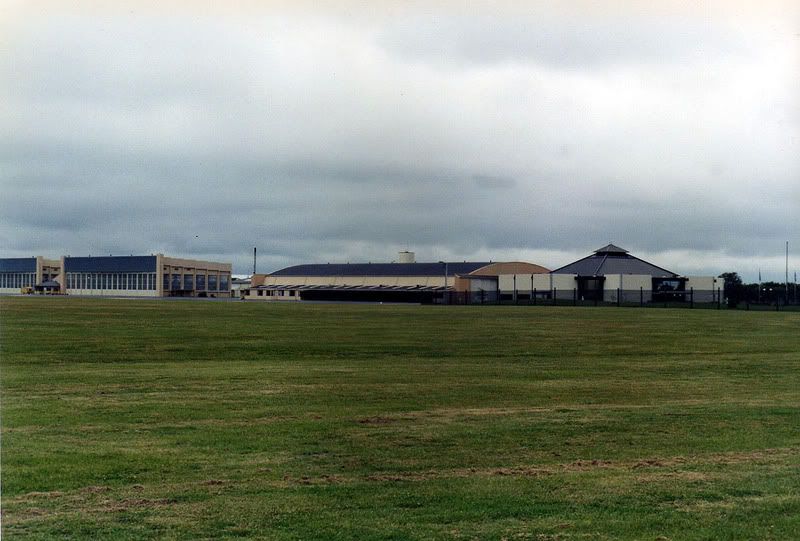




An Unofficial Guide To The
Royal New Zealand Air Force Museum
A Brief History of the RNZAF Museum

The RNZAF Museum is believed to have come into existence approximately on the 25th of June 1975, when approval was given for a museum to be established at RNZAF Base Wigram to record the history of the Royal New Zealand Air Force.
However it came about through a campaign to preserve the history of the RNZAF that was begun by three members of the Aviation Historical Society of New Zealand. One of the three, Peter Lewis, explains here:
"The original impetus for the preservation of RNZAF aircraft within the service came from the mid-1970s announcement of the planned withdrawal of the C-47. These aircraft, it was announced, would then all be sold by public tender.
The Auckland branch committee of AHSNZ (Dave Atcheson, Peter Layne and myself) then approached the national committee of AHSNZ with the idea that one of these historic aircraft should be retained by the RNZAF to form the nucleus of a museum. This idea was rejected by the national committee.
The three of us, as individuals, then started a letter-writing campaign to all MPs, some newspapers, and defence-force heads of departments promoting the idea of such a museum based at Wigram (being the most historic place). We suggested the retention of NZ3551 as the centre-piece, as this was the aircraft used by the Queen during the 1953 royal tour.
The idea gained traction, and this aircraft was retained. I am aware that many other people have done far more than us for the museum over the years, but the the germ of the proposal was from Auckland."
A new gymnasium had been built on the base at Wigram, and so the old gym building became the first site of the RNZAF Museum. This old gym happened to be in one of the original World War One hangars that had been built by Sir Henry Wigram's Canterbury Aviation Company, so it was very appropriate.
Later the museum was moved into the western half of No. 7 Hangar where it both restored and displayed aircraft and artifacts. More and more aircraft began to be collected as they left RNZAF service, or were retrieved from their Gate Guard positions, etc. Eventually more space was needed to store the collection and so the western half of No. 6 Hangar was also added to the Museum, and aircraft were hangared there while projects were restored in No. 7 Hangar.
The hangars were situated in the depths of the operational base and generally only accessible to base personnel and members of the public who had permission to enter the base.
When it was decided to open a dedicated public museum that was more accessible to people off the street, the original idea was to incorporate both No.s 6 and 7 Hangars with a new purpose built building added in between. See below:

The proposed complex in this drawing by RNZAF artist Maurice Conly. This drawing was circulated in several publications in the early 1980's, this particular example being a 1983 Ohakea airshow programme.
Money began to be raised through airshows and other fundraising movements, and the Friends of the RNZAF Museum was set up.
However later No. 1 Hangar was chosen to become the new museum site as it was closer to the main gate and didn't disrupt normal base routine as much with the public coming and going. The areas in 6 and 7 Hangars were also retained.
Meanwhile at RNZAF Weedons, a small satellite base to Wigram situated south of the base, the Museum's storage unit was set up. Weedons had been built as No. 4 Stores Depot in WWII and had large storage hangars perfect for the role of storing parts and other ephemera. It became the headquarters of the volunteer organisation set up to prepare the museum, the Geriatric Air Force.
Work began on the new museum building in front of No. 1 Hangar and on the 1st of April 1987, the 50th Anniversary of the RNZAF, the building was officially opened by Sir Paul Reeves, Governor General. There was also a large base parade and an airshow to commemorate the event.

The Museum - incorporating No. 1 Hangar with the 1980's addition on the right hand side of the photos. No's 2 and 3 Hangars to the left of shot are now also part of theRNZAF Museum. Photo - Damon Edwards
Since the grand opening in 1987 the Museum has been seen as one of Christchurch's, and one of New Zealand's, great tourist attractions. The collection has continued to expand and more aircraft have been acquired and restored.
When RNZAF Base Wigram was closed in 1995 the Museum moved out of 6 and 7 Hangar and into No.s 2 and 3 Hangars. They also took over No's 1 and 2 Stores and various other buildings in that area.
The RNZAF Museum has several different public sections, the Atrium, the History Hall, The Air NZ Hall, the Gallery, the Mezzanine, the Theatre, the Restoration Hangar and the Auxiliary Collection in Hangar 3 which can be visited on a tour party. As well as these there are the more private areas such as the administrative buildings, the Archives and storage. At this stage Weedons is also still used by the museum.
A major expansion is planned for the RNZAF Museum in the near future, further enhancing the experience that visitors will have.